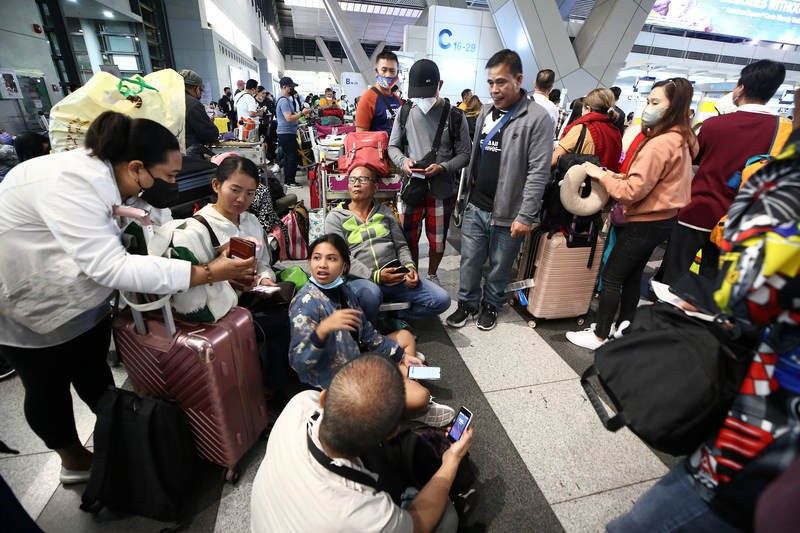Transport officials now deny calling air traffic management system ‘outdated’

MANILA, Philippines — After having called the air traffic management system that failed on New Year’s Day “outdated,” transport officials claimed Tuesday before a House of Representatives panel that they never characterized the equipment as such.
Transportation Secretary Jaime Bautista and Civil Aviation Authority of the Philippines Director General Manuel Antonio Tamayo both denied during the hearing of the House transportation committee that they called the Communications, Navigation and Surveillance Systems for Air Traffic Management (CNS/ATM) outdated.
“I did not say that the equipment is outdated,” Bautista said in Filipino. “There was a technical problem. Although I mentioned that this system is in its midlife.”
Rep. Romeo Acop (Antipolo City), who chairs the transportation panel, read an Inquirer.net story on the news briefing of transportation officials on the night of the outage and asked Tamayo to confirm if it is true that the air traffic equipment is “outdated.”
“No, sir,” Tamayo said in response.
Rep. Augustina Dominique Pancho (Bulacan) asked Tamayo the same question, to which he also replied in the negative.
He also said the CNS/ATM — which the government began procuring in 2009 and only inaugurated in 2018 — was in its “midlife,” citing advice from its manufacturer.
In his own words
But in a news briefing on the night of the outage that affected at least 56,000 passengers and cost airlines over P100 million, it was Tamayo himself who called the CNS/ATM “outdated.”
“Now our CNS/ATM, this was conceptualized way back in the late 90s. Naumpisahan ito, I think 2010, and finally it was completed in 2018. So medyo as far as the technology is concerned, it is already outdated,” he said then.
(Now our CNS/ATM, this was conceptualized way back in the late 90s. Work on this began, I think in 2010, and finally it was completed in 2018. So as far as the technology is concerned, it is already a bit outdated.)
Tamayo was also asked in the news briefing how outdated the country’s CNS/ATM is compared to its neighbors, to which he replied, “If you compare us with Singapore, for one, malaking (there is a big) difference. They are at least 10 years ahead of us.”
Another inconsistency
This was not the only inconsistency in the statements of transportation officials during the House hearing and the New Year’s Day news conference.
In the press briefing, Tamayo said the main uninterruptible power supply of the CNS/ATM failed at around 9:49 a.m. after its cooling blower conked out. A backup UPS should have kicked in, but he said “for some reason” it also failed to function.
But during the House hearing, Tamayo pinned the blame on a “fault” detected in the main circuit breaker which caused overvoltage, prompting the UPS to go into “standby mode.”
Tamayo said one of the UPS did have a problem with its cooling blower, “but other than that, it is functioning as it should be.”
Even though the two UPS units were still functioning, and did not fail as earlier claimed by transportation officials, Tamayo said they entered into an emergency procurement of two more UPS units because the current ones in use are in their midlife.
“The UPS life is between five to 10 years. Our position is that, why wait seven to 10 years when this is vital equipment, so we procured two right away as a measure to prevent this from happening again,” Tamayo said.
Did this not escape lawmakers, particularly Rep. Ramon Rodrigo Gutierrez (1-RIDER party-list) who questioned why the emergency procurement still proceeded.
“This system is midlife. It’s not really an emergency for us to replace at least the UPS,” Gutierrez said. “It’s possible, because the UPS is still functioning, we did not really have to fast track the procurement of the UPS and focus on fixing the circuit breaker.”
Related video:
- Latest
- Trending





























